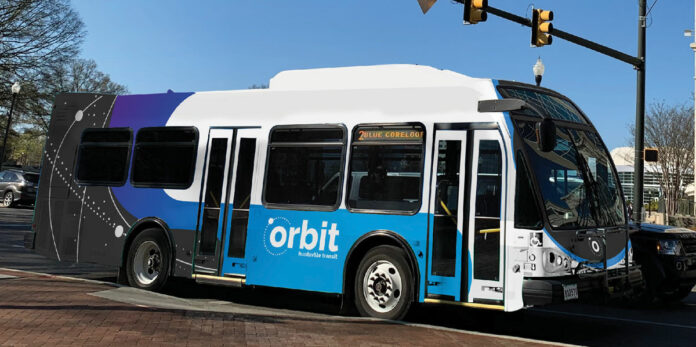HUNTSVILLE — Bus rapid transit is not a new concept.
The system was introduced in 1971 in England and has spread to many countries worldwide with the largest users in Latin America. In the U.S., major cities such as Los Angeles, San Francisco, Chicago, Cleveland and Jacksonville, Fla., implement the system.
Whether or not Huntsville will join the ranks of cities using bus rapid transit remains to be seen, but the city is going to give it a test drive. Huntsville received an $850,000 grant from the Federal Transit Authority as part of a pilot program for land-use study along a potential BRT corridor.
“This grant highlights our commitment to innovative housing and transportation solutions,” said Mayor Tommy Battle. “If implemented, bus rapid transit has the potential to transform our transportation landscape, providing residents with enhanced mobility options while promoting economic vitality and environmental sustainability.”
Emphasizing three key areas along University Drive with the greatest potential for Transit-Oriented Development — Northwoods, UAH and MidCity — the city says the study will explore unique prospects for residential and mixed-use growth catering to essential workers, students and families.
The city will work closely with stakeholders in all three areas to develop concepts for BRT station areas and first/last mile connections to visualize how TOD might look along the corridor and how it could connect to nearby areas.
Addressing affordability was a central concern in this year’s FTA grant allocation. The TOD study will review an array of policies tailored to supporting diverse housing options. The study is slated to commence this summer, culminating in a comprehensive report by mid-2025.
Spanning 9 miles from Providence Main Street to downtown Huntsville, the proposed BRT line would improve accessibility to key employment and activity centers while reducing greenhouse gas emissions. If implemented, BRT would offer commuters a fast, reliable and efficient transit option, facilitating greater mobility and connectivity within the community.
Quisha Bryant, Huntsville’s Director of Parking and Public Transportation, said BRT could revolutionize public transportation in Huntsville.
“A city of our size needs to provide transportation options for its residents, and as we grow, transit needs to grow with us,” Bryant said. “This is the first step in building upon our existing transit network and creating a regional system.”
Huntsville was one of 20 communities in 16 states to have received FTA funding as part of a pilot program for the TOD planning grant. Awarded annually, the initiative offers funding to facilitate the seamless integration of land use and transportation planning alongside the development of new high-capacity transit projects. The project is 100 percent federally funded, with no local or state match required.
Other cities sponsoring and receiving grants include Phoenix; Greensboro, N.C.; Omaha, Neb.; McAllen, Texas; and Alexandria, Va.
What is BRT?
- An advanced bus-based transit system that features dedicated rights-of-way, unique branding and distinctive stations.
- It incorporates technological improvements and leverages frequent operations to ensure effectiveness.
- Because of its reliability, convenience and speed, BRT circumvents common causes of delays experienced by traditional bus services, such as congestion and the need for on-board payment methods.
According to Lyt, a company focused on minimizing traffic, the following are pros and cons of BRT:
- Benefits: reliability, efficient travel and speed, encourages public transit ridership, positive environmental impact and economic development.
- Downsides: Implementation challenges, costly Infrastructure Upgrades, negative impact on traffic, discontent from drivers and equity of tax dollars.
Don’t miss out! Subscribe to our email newsletter to have all our smart stories delivered to your inbox.



